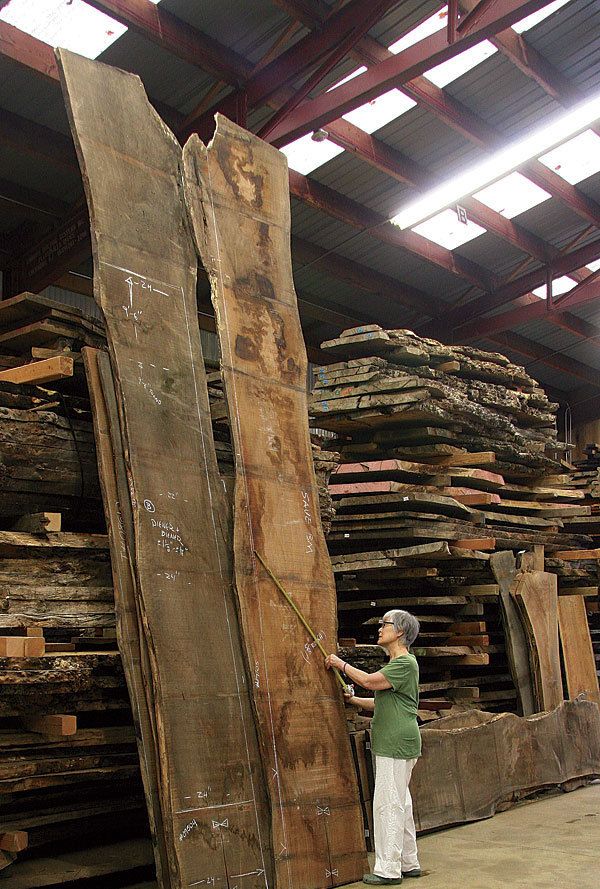The Soul of Nakashima
Mira Nakashima carries her father’s legacy forward
Synopsis: Since George Nakashima’s death in 1990, not much has changed at the leafy hillside property in New Hope, Pa., where he settled with his wife and young daughter in 1946. A dozen or so craftsmen still take projects from raw planks to completion one by one; the enormous lumber sheds are still bursting with some of the biggest and most beautiful slabs of flitch-cut Eastern black walnut ever sawn; the nine-acre property and the houses, workshops, sheds, and other buildings Nakashima built on it are still scrupulously maintained; and the finished furniture being produced there bears close comparison to the pieces made during Nakashima’s lifetime. Twenty-two years after his death, Nakashima’s business is still functioning—and flourishing—much as it did in his lifetime, now under the guidance of his daughter, Mira.
George Nakashima was one of a handful of woodworkers—along with Wharton Esherick, James Krenov, and Sam Maloof—whose furniture lit the fuse for a revival of woodworking in the 1970s, and whose work remains widely influential today among amateur and professional woodworkers alike. These pioneers embodied the merging of the designer with the craftsman and a maker’s life with his work. For Nakashima, like Esherick and Maloof, the most powerful expression of his philosophy, furniture style, and way of working is found in the buildings and landscape he crafted bit by bit throughout his life.
Since Nakashima’s death in 1990, not much has changed at the leafy hillside property on Aquetong road in New Hope, Pa., where he settled with his wife and young daughter in 1946. And that in itself is slightly miraculous. A dozen or so craftsmen still take projects from raw planks to completion one by one; the enormous lumber sheds are still bursting with some of the biggest and most beautiful slabs of flitch-cut Eastern black walnut ever sawn; the nine-acre property and the houses, workshops, sheds, and other buildings Nakashima built on it are still scrupulously maintained; and the finished furniture being produced there bears close comparison to the pieces made during Nakashima’s lifetime. Twenty-two years after his death, Nakashima’s business is still functioning—and flourishing—much as it did in his lifetime, now under the guidance of his daughter, Mira.
It sounds like a natural transition—one Nakashima leading to another. And Mira, with two degrees in architecture and two decades working alongside her father, could hardly have been better trained to take his place. Yet when her father died, Mira wasn’t at all sure what to do. George Nakashima, reflecting his Samurai ancestry, was, Mira says, “very strict, very authoritarian. I wasn’t allowed to question him. He fired me twice for being too assertive.”
He could be an intimidating figure to his workmen, as well, and uncompromising even with his customers. If a client didn’t like what he proposed to make for them, Nakashima would be likely to say, “then go to Macy’s.” Mira had no idea whether she could make the shift from never questioning authority to exercising it herself. “But after Dad died,” Mira says, “I looked at the woodpile, and I looked at the men in the shop, and I looked at the stack of orders, and I thought, I guess we’ve got to keep going.”
For the full article, download the PDF below.


















Log in or create an account to post a comment.
Sign up Log in